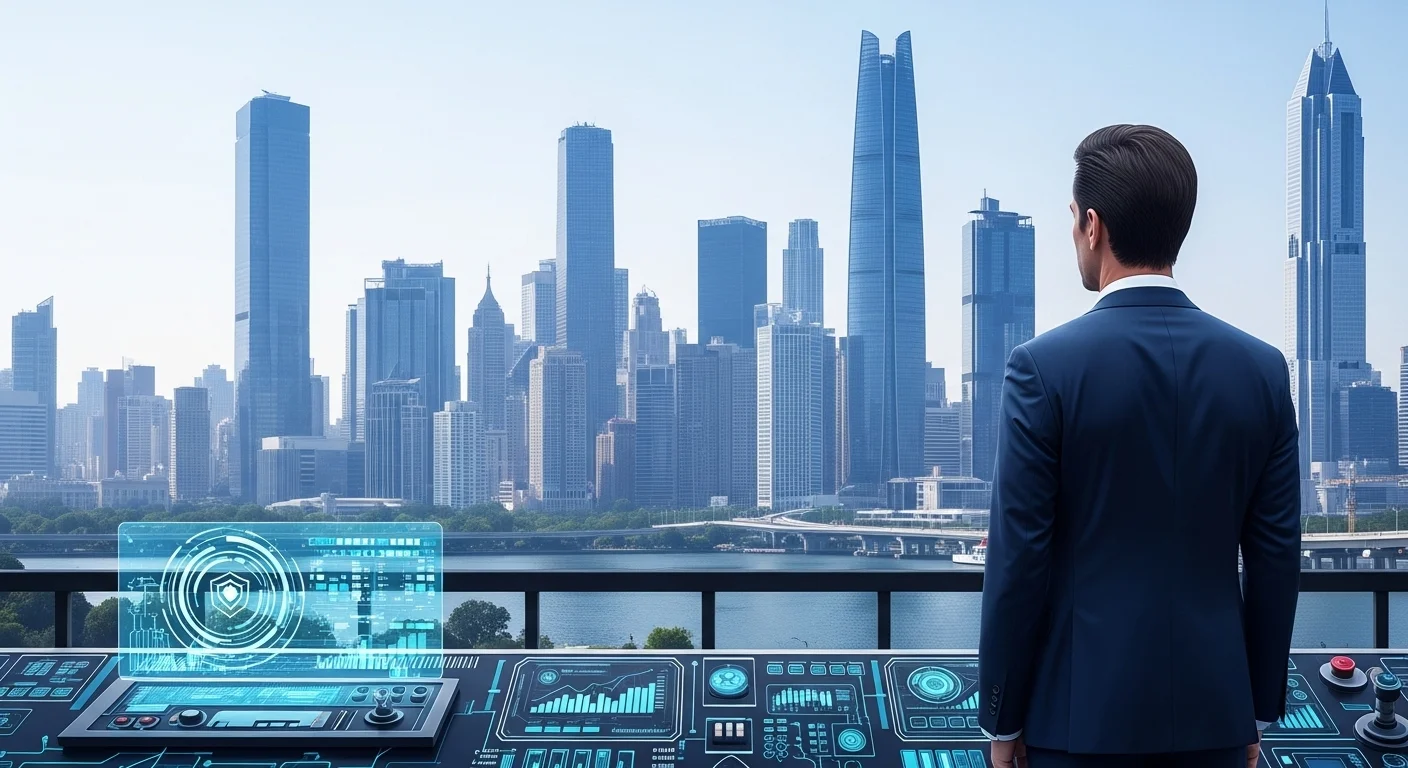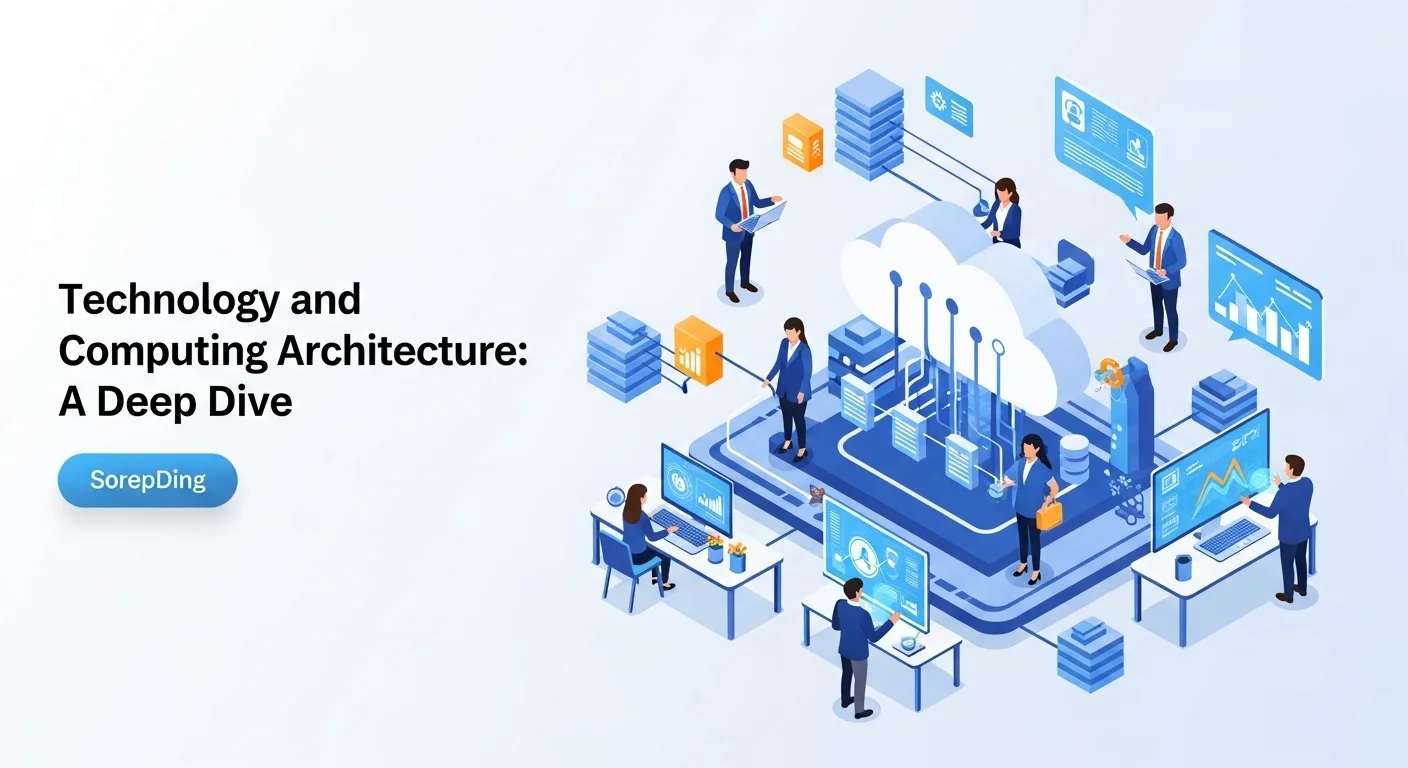Securing Your Digital Foundation: A Human's Guide to Tech Infrastructure for 2025

Executive Summary
Imagine your business is a high-tech skyscraper. You've got the fastest elevators, the smartest offices, and the best views. But what if the foundation itself was weak? The entire building would be at risk. In our digital world, your IT infrastructure is that foundation. It's the collection of hardware, software, and networks that supports everything you do. Protecting it isn't just an IT task; it's a core business strategy. A failure here can mean devastating data breaches, crippling downtime, and a loss of customer trust that's hard to win back. In this guide, I'll walk you through what infrastructure security really means, drawing from years of experience in the trenches. We’ll explore the essential components, see how agencies like CISA can be your ally, and lay out a clear roadmap to building a strong, resilient digital foundation for your business's future.
Table of Contents
Table of Contents
- What is Infrastructure Security and Why is it Crucial?
- The Core Pillars of IT Infrastructure
- The Critical Role of Government and Agencies
- The Business Imperative: Why Security is About Survival
- Your Playbook for Building a Secure Infrastructure
- Business Strategies and Available Resources
- Making Security a Habit: Tips to Stay Safe and Strong
- Essential Business Tools and Technologies
What is Infrastructure Security and why is it so important in Technology?
I've spent over a decade helping companies recover from cyberattacks, and I can tell you that the most devastating breaches almost always start with a crack in the foundation. That foundation is what we call infrastructure security. It’s the essential, and often invisible, work of protecting the core technology your entire business runs on. This isn't just about antivirus software. It's about securing everything from the physical servers locked in a room to the vast, complex cloud services you use every day. If your apps are the houses on a street, your infrastructure is the ground they're built on, along with the power lines and water pipes. If that foundation isn't secure, every house is vulnerable.
In this era of constant connection, the stability and integrity of that underlying tech are non-negotiable. A breach at this level isn't like a leaky faucet; it's like the main water line breaking. An attacker with control of your core network could see all your data, shut down your business, and move through your systems without restraint. That's why building a strong defense isn't a luxury—it's a fundamental requirement for staying in business.
The Core Pillars of IT Infrastructure
To really get a handle on this, let's break it down into its core parts. I've seen businesses focus on one area while completely neglecting another, so understanding the whole picture is key.
- The Stuff You Can Actually Touch (Physical Infrastructure): This is where it all begins. Data centers, server racks, cables, and computers. Security here means controlling who can physically get near the hardware, using things like key cards, cameras, and secure rooms. It also means protecting against disasters like fires or floods. Even in the age of the cloud, remember that the cloud is just someone else's computer—a physical server in a data center somewhere.
- The Digital Highways (Network Infrastructure): This is how all your devices talk to each other—routers, switches, and firewalls. Securing these pathways is critical. A solid network security infrastructure means dividing your network into smaller, isolated zones (a practice called segmentation) to stop an intruder from roaming freely. It's like having locked doors between different departments in an office building.
- The Brains of the Operation (System Infrastructure): This includes the operating systems (like Windows or Linux) and server software that run on your hardware. Securing this level involves 'hardening' your systems by turning off unneeded features, applying security updates (patches) the moment they're available, and using modern endpoint protection to block malicious software.
- The Cloud (Cloud Infrastructure): The move to the cloud has been a game-changer, but it comes with its own rules. This is where cloud security infrastructure is vital. Cloud providers (like Amazon Web Services or Microsoft Azure) secure their physical data centers, but you are responsible for securing everything you put in the cloud—your data, your applications, and your configurations. It's a shared responsibility, and I've seen costly breaches happen when a company forgets its part of the deal.
The Critical Role of Government and Agencies
The security of our digital foundation isn't just a business concern; it's a matter of national security. Key sectors like energy, finance, and healthcare are considered critical infrastructure. An attack on them could impact an entire nation. That's why governments have stepped up.
In the United States, the main player is the Cybersecurity and Infrastructure Security Agency (CISA). Think of them as the nation's top cybersecurity advisors, and their advice is free. The CISA Cybersecurity and Infrastructure Security Agency partners with both government and private companies to defend against threats and build a more resilient future. They provide a treasure trove of resources—threat alerts, vulnerability information, and best-practice guides that are incredibly valuable for any business. [4] They champion the idea that we're all in this together, and their work helps equip everyone with the tools to fight back. [19]
The Business Imperative: Why Security is About Survival
For any business, investing in protecting your infrastructure isn't about compliance checkboxes. It's about ensuring you can open your doors—virtual or physical—tomorrow. A major incident can lead to:
- Financial Ruin: It's not just about the cost of fixing the mess and paying fines. It's about the lost sales and the hit to your company's value, which can be far worse.
- Operational Paralysis: A ransomware attack can bring your entire operation to a standstill for days or even weeks. No products, no services, no revenue.
- Shattered Trust: Customers will not stick with a company that can't protect their data. Rebuilding that trust is a long, uphill battle.
- Theft of Your Best Ideas: For many tech companies, your intellectual property is your most valuable asset. A breach can mean your secret sauce, product designs, and innovative ideas are stolen by competitors.
As businesses blend on-premise and cloud systems, the complexity grows. This is why specialized cloud infrastructure security services are booming. These experts help manage the unique challenges of the cloud, from continuous monitoring to managing who has access to what. In today's world, a proactive, layered defense is the only way to play the game, and it all starts with a secure foundation.

Your Playbook for Building a Secure Infrastructure
Alright, we've covered the 'what' and the 'why'. Now for the fun part: the 'how'. Building a truly secure infrastructure isn't about finding one magic bullet. It's about layering your defenses, being smart with your processes, and using the incredible resources available to you. This is the playbook I've used to help businesses transform their security from a liability into a strength.
Technical Methods for Fortifying Your Tech
The core philosophy here is 'defense-in-depth'. Assume that one of your security measures will eventually fail. The goal is to have another layer right behind it to stop the attack.
1. Building an Intelligent Network Security Infrastructure
A modern network security infrastructure is much more than a firewall at the edge. It's a smart, resilient system that actively fights back.
- Zero Trust Architecture (ZTA): This is a total change in mindset. The old way was 'trust, but verify'. Zero Trust says 'never trust, always verify'. Imagine a security guard who checks everyone's ID at every single door inside your building, not just the front entrance. It means every request to access data is challenged and verified. It's a game-changer for stopping attackers from moving around if they do get inside.
- Segmentation and Micro-segmentation: This is the digital equivalent of watertight compartments on a ship. You divide your network into small, isolated zones. If one area is breached—say, the marketing department's network—the damage is contained and can't spread to critical areas like finance or engineering. Micro-segmentation takes it even further, sometimes protecting individual applications.
- Intrusion Detection and Prevention Systems (IDS/IPS): These are your digital watchdogs. An IDS watches network traffic for suspicious behavior and sounds the alarm. An IPS goes a step further and actively blocks the threat. They are essential for catching and stopping attacks as they happen.
2. Mastering Your Cloud Security Infrastructure
The cloud is fantastic, but I've seen too many people assume it's automatically secure. It's not. A secure cloud security infrastructure requires constant vigilance and automation.
- Cloud Security Posture Management (CSPM): Human error is the number one cause of cloud breaches. Someone accidentally leaves a database open to the public internet, and disaster strikes. CSPM tools are your automated safety net. They constantly scan your cloud setup for misconfigurations and compliance issues, alerting you before an attacker finds them.
- Cloud Workload Protection Platforms (CWPP): While CSPM secures the cloud environment itself, CWPP protects what's running inside it—your virtual machines, containers, and applications. They act like specialized bodyguards for your cloud-based operations, watching for threats and vulnerabilities.
- Identity and Access Management (IAM): In the cloud, your username and password are the keys to the kingdom. Strong IAM is crucial. This means giving people the absolute minimum permissions they need to do their job (the principle of least privilege), enforcing multi-factor authentication (MFA) everywhere, and regularly reviewing who has access to what.
Business Strategies and Available Resources
The best technology in the world won't save you if your people and processes aren't aligned. Security is a team sport.
1. Putting the Cybersecurity and Infrastructure Security Agency (CISA) to Work
The CISA Cybersecurity and Infrastructure Security Agency is one of the best free resources on the planet. Don't just know they exist; actively use them. [4] Here's how:
- Subscribe to Their Alerts: Get their updates delivered right to your inbox. CISA sends out timely information on active threats and new vulnerabilities. This intelligence helps you know what to defend against *right now*.
- Use Their Free Tools: For qualifying organizations, CISA offers free services like vulnerability scanning. It's like getting a free security check-up from a world-class expert.
- Adopt Their Frameworks: Don't reinvent the wheel. CISA provides expert-backed guides on everything from stopping ransomware to securing the cloud. Aligning your strategy with their advice is a massive head start.
2. Choosing the Right Security Partners
Let's be honest, most businesses can't afford a huge, in-house team of security experts. That's where managed services can be a lifesaver. When looking at cloud infrastructure security services, ask these questions:
- Are you available 24/7? Attackers don't work 9-to-5. You need a partner who is watching your back around the clock.
- Do you truly understand the cloud? Ask for certifications and case studies specific to the platforms you use (AWS, Azure, etc.).
- Can you help with compliance? A good partner should help you navigate regulations like GDPR or HIPAA and provide clear reports that show you are secure.
3. Thinking in Terms of Risk
You can't protect everything equally, so focus on what matters most. A risk management process helps you identify your crown jewels (the most critical data and systems), understand the threats against them, and invest your limited security budget where it will have the biggest impact. It's about making smart, informed decisions, not just buying the latest security gadget.

Making Security a Habit: Tips to Stay Safe and Strong
Building a secure foundation isn't a one-and-done project. It's a continuous cycle of improvement and adaptation. The threat landscape changes daily, and our defenses must evolve with it. Here are some of the most effective strategies and tips I've shared with businesses to help them create a resilient and trustworthy technology environment. This proactive mindset is what separates the victims from the victors in cybersecurity.
Core Strategies for Continuous Improvement
True security comes from embedding these practices into your company's DNA, making them a part of how you operate every single day.
1. Live by the Principle of Least Privilege (PoLP)
This is the simplest, most powerful security concept, yet it's so often ignored. The rule is: give any person or system only the bare minimum permissions needed to do their job. You wouldn't give every employee a master key to the entire building, right? The same logic applies to your digital world. An intern in marketing should never have access to sensitive financial records. By strictly limiting access, you drastically shrink the potential damage if an account is ever compromised.
2. If You Can't See It, You Can't Defend It
Comprehensive logging and monitoring are your eyes and ears. You need to collect logs from every layer of your infrastructure—your network, servers, and cloud services. But logs sitting in a folder are useless. You need a system, often called a Security Information and Event Management (SIEM), to pull all that data together, look for suspicious patterns, and alert you to potential trouble. It's the difference between trying to find a burglar in a dark house versus one with all the lights on.
3. Automate, Automate, Automate
In today's complex environments, trying to do everything manually is a recipe for failure. Humans are great at strategy, but we're terrible at doing the same repetitive task perfectly a thousand times. Computers excel at it. Put automation to work:
- Patching: Set up systems to automatically test and deploy critical security patches. Attackers love to exploit old, known vulnerabilities.
- Compliance: Use tools to constantly check that your cloud security infrastructure meets security benchmarks. This prevents 'configuration drift' where settings are slowly changed to become insecure over time.
- Incident Response: Create automated responses to common alerts. For instance, if malware is detected on a laptop, an automated process could instantly isolate that machine from the network to prevent it from spreading.
4. Build a Human Firewall
Your people are your greatest asset and, without training, your biggest vulnerability. Your first line of defense is a well-trained, security-conscious team. Run regular, engaging training on how to spot phishing emails, use strong passwords, and avoid social engineering traps. Just as important, create a culture where people feel safe reporting a mistake or a suspicious event without fear of punishment. As the CISA Cybersecurity and Infrastructure Security Agency often notes, security is a community effort, and that community starts with your employees. [4]
Essential Business Tools and Technologies
Equipping your team with the right tools makes all the difference. While the market is crowded, a few categories are non-negotiable for protecting a modern business.
- Next-Generation Firewalls (NGFW): These aren't your old-school firewalls. An NGFW is an intelligent gatekeeper for your network security infrastructure that understands not just where traffic is going, but what it is. It can block specific applications and uses threat intelligence to stop the latest attacks.
- Identity and Access Management (IAM) Solutions: These tools provide a central command center for managing user access. Look for modern solutions that offer Single Sign-On (SSO) for convenience and Multi-Factor Authentication (MFA) for security.
- Cloud-Native Security Platforms (CNAPP): These integrated platforms are essential for the cloud. They combine capabilities like CSPM (checking configurations) and CWPP (protecting workloads) into a single view, giving you a complete picture of your cloud infrastructure security services.
- Vulnerability Management Platforms: These tools do more than just scan for weaknesses. They help you prioritize which vulnerabilities to fix first based on risk, track the patching process, and provide the reports you need for audits.
Leveraging External Expertise and Resources
You don't have to go it alone. Being smart about security means knowing when to ask for help.
First, stay connected with government resources. Following agencies like the Cybersecurity and Infrastructure Security Agency (CISA) on social media like Twitter can provide real-time updates and warnings. [20] It’s a simple, high-value action to take.
Second, for getting your technical teams up to speed, external training resources are invaluable. For example, a clear, well-made video on 'Infrastructure Security for Cloud Computing' can provide foundational knowledge that pays dividends. [8] Encourage continuous learning.
Finally, consider professional services. For many businesses, partnering with a Managed Security Service Provider (MSSP) gives you access to a 24/7 security operations center and top-tier expertise at a fraction of the cost of building it yourself. It's a strategic move that lets you focus on your business, knowing that experts are watching your back.
By weaving together these strategies, tools, and resources, you can build an infrastructure that doesn't just survive in today's threat landscape—it thrives.
Expert Reviews & Testimonials
Sarah Johnson, Business Owner ⭐⭐⭐⭐
As a small business owner, this was really eye-opening. The analogy of the skyscraper's foundation really clicked for me. I'd love a follow-up with a simple checklist for businesses just starting to think about this.
Mike Chen, IT Consultant ⭐⭐⭐⭐
Solid overview. The breakdown of cloud security vs. on-prem was particularly clear. Some of the technical acronyms could use a quick 'in plain English' definition right in the text, but overall a great resource for IT pros.
Emma Davis, Tech Expert ⭐⭐⭐⭐⭐
Finally, an article that connects all the dots! As a security specialist, I appreciated the depth on Zero Trust and the practical advice on using CISA resources. This is getting bookmarked and shared with my team. Absolutely brilliant.



